I have a dataset with four variables measuring respondents' view on different topics. I want to plot them into one stacked bar chart so you can compare the values between the different topics.
This are the first rows of the dataset:
lebanon <- structure(list(climate_change = c(
"Not a very serious problem",
"Not a very serious problem", NA, NA, "A very serious problem",
"A somewhat serious problem"
), air_quality = c(
"A somewhat serious problem",
"Not a very serious problem", NA, NA, "A very serious problem",
"A very serious problem"
), water_polution = c(
"A somewhat serious problem",
"Not a very serious problem", NA, NA, "A very serious problem",
"Not at all a serious problem"
), trash = c(
"A very serious problem",
"Not a very serious problem", NA, NA, "A very serious problem",
"A somewhat serious problem"
)), row.names = c(NA, -6L), class = "data.frame")
I did try with the following code based on this site:
lebanon %>%
filter(!is.na(climate_change), !is.na(air_quality), !is.na(water_polution), !is.na(trash)) %>%
gather(variable, value, climate_change:trash) %>%
ggplot(aes(x = variable, y = value, fill = value)) +
geom_bar(stat = "identity") +
coord_flip()
Getting this graph:
There are three problems with this graph.
1.) The bar graphs are not the same length.
2.) I don't why there is something written at the location where x-axis hits the y-axis. How do I remove this?
3.) I want to order the values so they make sense, so I orderer them before with:
dataset$climate_change <- factor(dataset$climate_change, levels = c("Not at all a serious problem",
"Not a very serious problem",
"A somewhat serious problem",
"A very serious problem"))
dataset$air_quality <- factor(dataset$air_quality, levels = c("Not at all a serious problem",
"Not a very serious problem",
"A somewhat serious problem",
"A very serious problem"))
dataset$water_polution <- factor(dataset$water_polution, levels = c("Not at all a serious problem",
"Not a very serious problem",
"A somewhat serious problem",
"A very serious problem"))
Yet the values are still unorderer. What am I doing wrong? Or is there a more effective way to make a multiple stacked bar chart?

